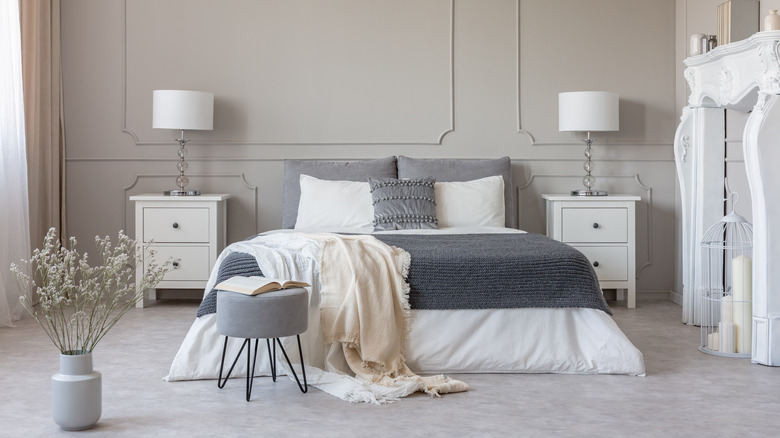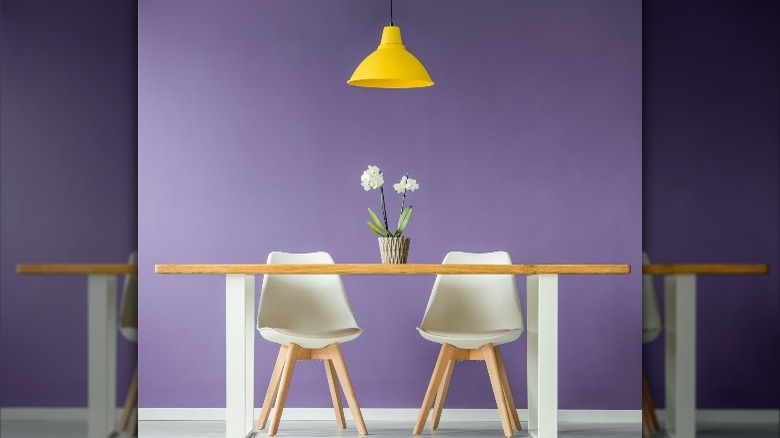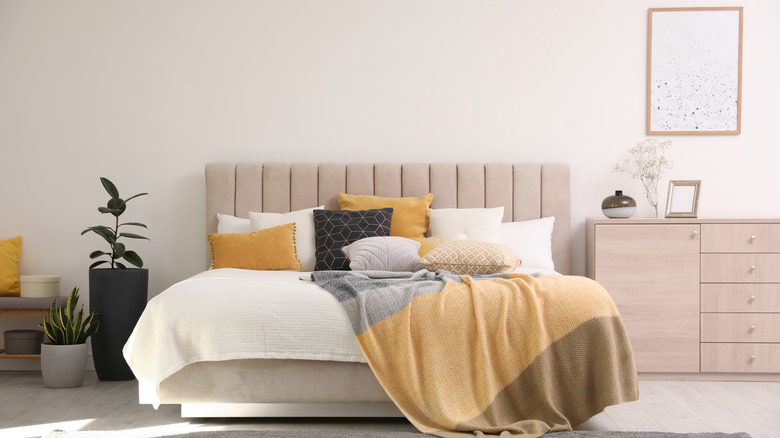What To Know About The Importance Of Symmetry In Interior Design
Symmetry, or balance, is an integral part of designing a room for a number of reasons. As The Interior Editor explains, when a space is symmetrical, it feels calming and comfortable. Additionally, symmetry allows the onlooker to easily make sense of what they are seeing — these areas never feel chaotic or out of order.
However, while balance is extremely important, it can also sometimes make spaces appear boring or unsurprising, per Hadley Court. This is the main reason why many have strayed away from buying perfectly matching furniture sets. The best spaces are created by using both symmetry and asymmetry to create an orderly but also interesting design.
If your home's décor feels too chaotic, you'll find some tips on how to create more symmetry below. Or, maybe your home appears too predictable and you want to add interest. If that's the case, you'll discover how to include asymmetry in your space as well.
How to create symmetry
The first step in creating symmetry is finding or creating the focal point in a room. According to Serendipity, whatever draws the eye when you glance around a room is the center of interest. Typically, fireplaces, windows, or televisions are considered focal points in living spaces. However, sometimes there is no clear area that draws attention — if that's the case, a focal point could be created with the use of wall paint, artwork, or a bold piece of furniture. Also, keep in mind that a rug or a light fixture could work as the piece of prime focus.
Once the focal point has been identified, then you can create a symmetrical design around that piece. Hadley Court says to place mirroring pieces on either side. For instance, two identical armchairs, side tables, and lamps could be placed on either side of a fireplace to provide perfect symmetry.
How to create asymmetry
However, as Havenly points out, spaces that look too perfect can appear boring and lack dimension. Therefore, it's important to balance symmetry with asymmetry. While traditional spaces lean more toward symmetry, modern areas tend to gravitate toward asymmetrical designs. To create asymmetry, focus on seeking balance in a more abstract way. For instance, instead of placing two identical armchairs on either side of a fireplace, replace one with a plant that's roughly the same size as the chair. You can also create a more balanced appearance by sticking to one color palette or using similar materials throughout the room.
The Interior Editor says that an important aspect of asymmetry is understanding the visual weight of objects. Darker and larger objects will provide more visual weight than lighter and smaller ones, so balancing out your items on either side of your focal point is important. Creating a space that's both pleasing to the eye while also feeling dynamic may take some trial and error — move around furniture and decorative accents until your space feels harmonious.


